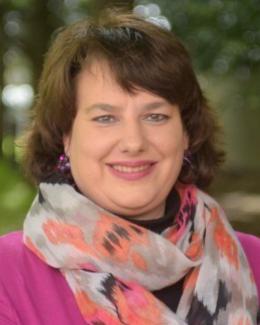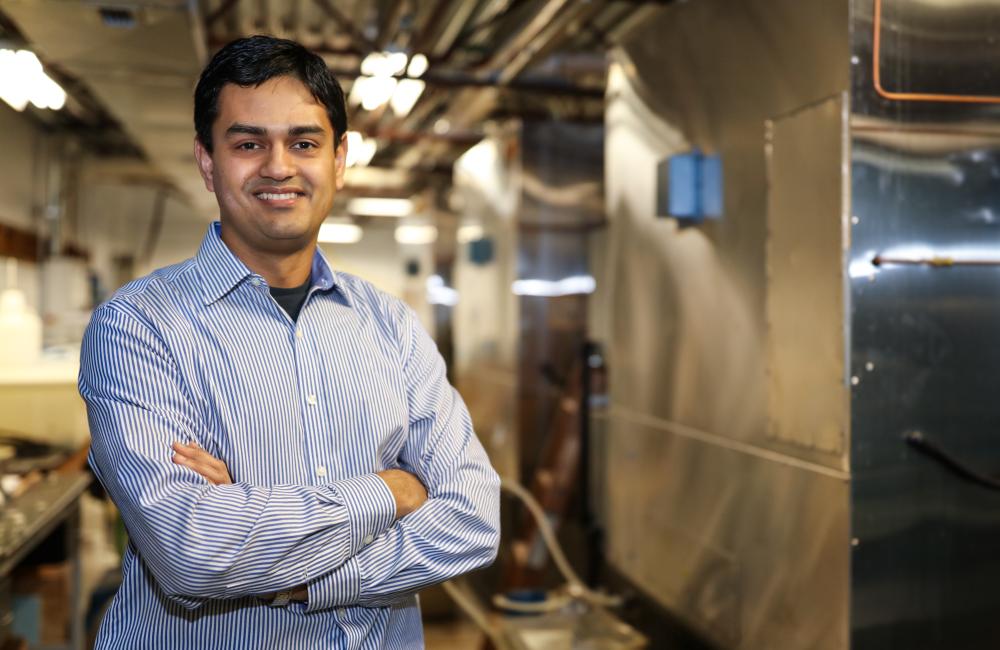June 6, 2018 – Inspiration often strikes in the unlikeliest of places and for Kaushik Biswas, a mechanical engineer in ORNL’s Building Envelope & Urban Systems Research Group, a moment spent enjoying entertainment led to the idea of developing self-healing vacuum panels for buildings.
“I was watching a movie in which tires on a presidential limousine could self-repair or inflate when damaged,” he recalled. “This intrigued me, and I thought, if tires can repair themselves, why not vacuum insulation panels?”
Fast forward a few years, and Biswas brought the concept to life by creating novel multi-layered barrier films with self-healing properties for vacuum insulation panels (VIPs). This high-tech insulation is five to 10 times better at reducing unintended heat losses and gains through building walls and roofs than conventional materials.
“VIPs are more widely used in Europe,” Biswas said. “The industry here hasn’t fully adapted to them yet, with durability being a big concern. A common question from industry is, ‘what if someone puts a nail through a VIP?’ My answer is, but what if we can develop a type of panel that can heal from punctures? It removes one of the major barriers to adoption of VIPs in buildings.”
Biswas found a niche that no one was addressing in the industry. “Self-healing barriers are a potentially game-changing technology,” he said. “They can seal cuts and punctures and maintain the internal vacuum, overcoming durability concerns.”
The work is a high priority for the Department of Energy’s Building Technologies Office. Some 40% of the nation’s energy is consumed in residential and commercial buildings, according to DOE.
Over the past year, Biswas has been working with ORNL Chemical Sciences Division researchers Tomonori Saito and Pengfei Cao to optimize the self-healing chemistry, demonstrating proof of concept through laboratory experiments. “We had some challenges coming up with the correct chemical formulation, but we think we have identified an appropriate combination,” he said.
The team conducted experiments to see if small-scale samples could self-heal themselves after penetration—and they did. “We performed a limited number of experiments on 2x2-inch samples and they were successful,” Biswas said. “The next step is to determine how we scale up to something that can actually fit a vacuum panel.” The team expects to complete the scale-up to vacuum panel size in 2018.
Combining materials research with heat transfer principles has been a primary focus of Biswas’ work with ORNL. He’s been part of a research team that developed a two-inch-thick composite foam-VIP insulation board that can achieve R25 (unit of thermal resistance), which is more than twice as much as typical insulation used in buildings. He’s also investigating alternative thermal management techniques for buildings; building materials with tailored properties; and energy generation and storage technologies.
“For example, I’m looking into whether we can create materials that have a different permeability in different directions, allowing water vapor to pass through in one direction but prevent it from passing in another direction,” he said. “As a group, we are constantly seeking new and innovative ideas for buildings; we’re fortunate to have the resources within ORNL to bring a lot of the ideas to fruition.”
Biswas’ quest for discovery is rooted in his pre-ORNL work. He grew up in India and came to the U.S. to pursue his master’s and doctoral degrees in mechanical engineering at Purdue University.
“Like many other kids in India, I wanted to be a professional cricket player, but that wasn’t a realistic plan. During my high school days, medical and engineering fields were by far the two most promising career options,” he said. “Dissecting laboratory animals wasn’t for me, so that led me to engineering. I like solving problems, no matter how big or small; a quality that I feel lends itself well to engineering. I want to use my skills and expertise to develop solutions to problems that can benefit society.”
The focus of Biswas’ PhD dissertation was investigation of radiation heat transfer characteristics of laboratory-scale fires. After graduation, he entered the corporate world, working as an industrial engineer in Arizona, investigating building and vehicle fires. “We would evaluate evidence after a fire or explosion and try to understand why it occurred,” Biswas said. “The work was mostly a process of elimination of potential causes.”
He came to ORNL in 2009, where he was recruited to work on a project to explore how buildings perform in wildfire-prone regions. “It was my combustion-related experience that paved the way to ORNL’s Buildings Program,” he said. “Once I got here, I sought to broaden my expertise to the energy efficiency and durability aspects of buildings.”
Biswas has made his home in East Tennessee, with his wife and three-year-old son. His parents still live in India, but his mother has visited several times and so has a close uncle who mentored him as a child.
“When I was in India, for practically all my life, I was a student,” he said. “My education is still continuing, but now I get to apply what I’ve learned to real-world problems.”
ORNL is managed by UT-Battelle for the Department of Energy's Office of Science, the single largest supporter of basic research in the physical sciences in the United States. DOE’s Office of Science is working to address some of the most pressing challenges of our time. For more information, please visit http://energy.gov/science. —by Jennifer Burke



